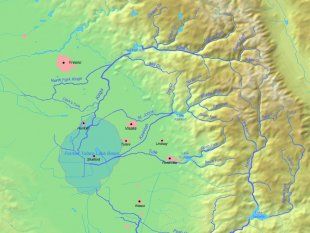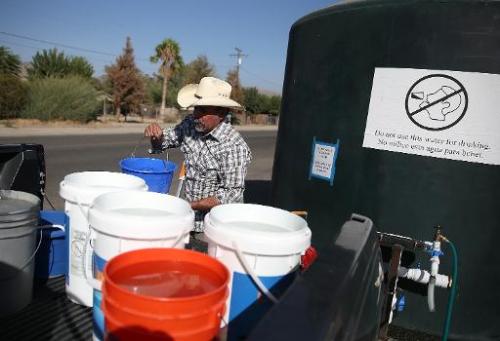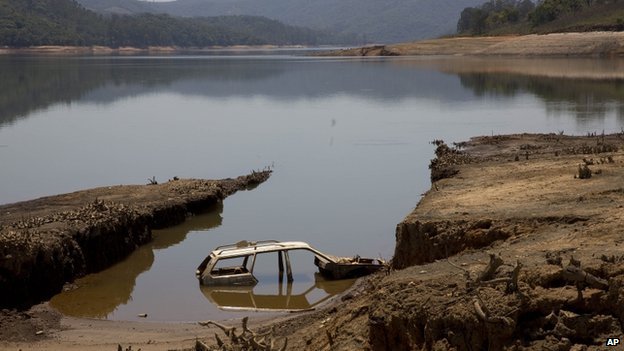
© Unknown
At least one California town has gone dry, and many are expected to follow soon. East Porterville, in Tulare County is now without water, as the wells that feed it have dried up. Residents, according to Yahoo! News, now have to
drive to the local fire station to get water to drink, bathe, and flush the toilet. And ironically, the town is near what was once the largest freshwater lake in California.
Tulare County, which relies heavily on the agricultural industry, is parched. The some 500 wells that feed its residents and farmers have gone dry. And the county says that it may be years and cost $20 million before a new groundwater management program, which includes a hookup between East Porterville and Porterville's water systems, goes into effect.
The county is named for
Tulare Lake, which was once the largest freshwater lake west of the Great Lakes. It was drained for regional agricultural purposes, begining in the early 20th Century. The lake basin is now some of the most fertile
soil in the Central Valley, the most productive agricultural region of the United States. Although dry for the most part, the lake occasionally reappears after unusually high levels of rainfall or snow melt, the last time being 1997.
Earlier this month, a 5,000-gallon-water tank, donated by the county's Sheriff's Association was delivered to East Porterville, and that is primary source of water for this low-income community. Residents now drive to the fire department with empty water jugs and pump water from the tanks to take home. The county has also been supplying free bottled water, paid for by the state, to residents for drinking and cooking.
However, there are worries within the community that the county might use the bottled-water handout to identify undocumented residents or condemn homes that are in disrepair. Non-profit groups and churches have also been trying to help supply water to East Porterville residents.
"It's a disaster," says Andrew Lockman, manager of the Tulare County Office of Emergency Services. "It's not a tornado, it's not a hurricane, it's a quiet disaster."



Comment: The drought in California is getting increasingly severe, with more areas beginning to resemble a Third World country! Wells are drying up , with the drought spreading at an unprecedented rate. Could mass migration be imminent?